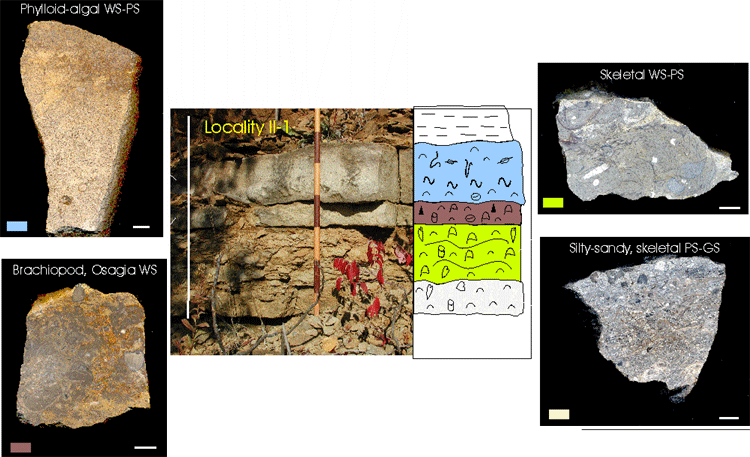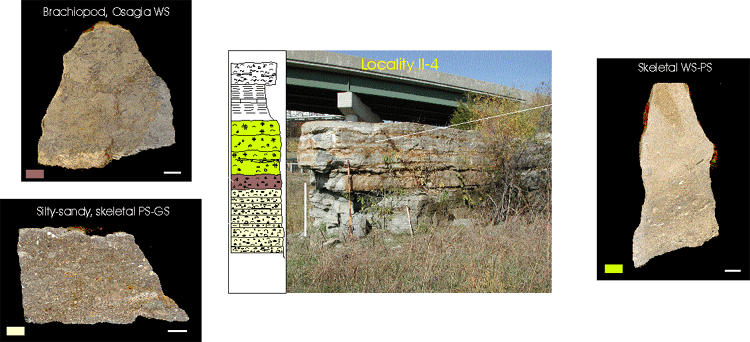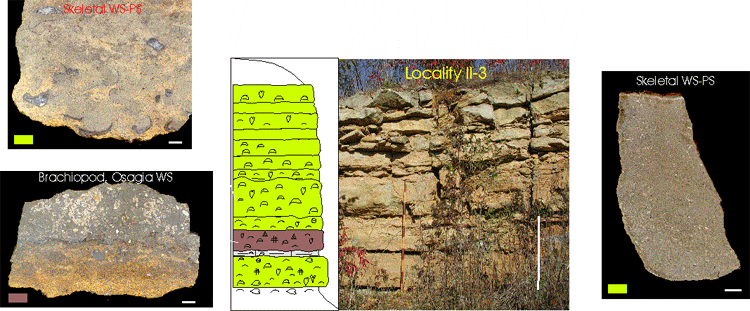Merriam Limestone Lithofacies
Paleo-highs |
 |
| On paleotopographic highs away from channelized areas, the Merriam is represented by three units totaling <1m in thickness. The lower unit consists of coated-grain GS, with a thin zone of brachiopod, Osagia WS near the base. A thin, fossiliferous shale forms the second unit, and is overlain by an upper unit composed of phylloid-algal WS, grading to skeletal WS-PS at the top. |
Channel Margins |
 |
| At the margins of large-scale channels, 4 units are present in the Merriam, again with a combined thickness of <1m. A thin bed of silty, skeletal PS is overlain by a poorly bedded unit of skeletal WS-PS. The fauna in the two units are similar, but fossils are more well-preserved and are not aligned in the skeletal WS-PS unit. The matrix of this unit contains more lime mud relative to siliciclastic material, and it contains no clasts of the Bonner Springs. A thin bed of the brachiopod, Osagia WS facies underlies the uppermost Merriam unit, which is similar to its expression on paleo-highs, consisting of phylloid-algal WS and skeletal WS-PS. |
Channel Lows |
 |
 |
 |
|
| Merriam deposits in channel lows show the most variation in facies and stratal geometries. The lower 3 units described at channel margin areas again represent the basal deposits. The silty-sandy, skeletal PS facies thickens significantly from the margins into lows. The skeletal WS-PS and brachiopod, Osagia WS units thicken slightly into the lows. The greatest thickness is represented by skeletal WS-PS beds that overlie the brachiopod, Osagia WS unit, and these beds are truncated as they near channel margins. Locally, these beds are dominated by coated grains, which likely were washed in from high areas. |
|
|
e-mail : webadmin@kgs.ku.edu
Last updated May 2003
http://www.kgs.ku.edu/PRS/publication/2003/ofr2003-26/ P1-05.html
